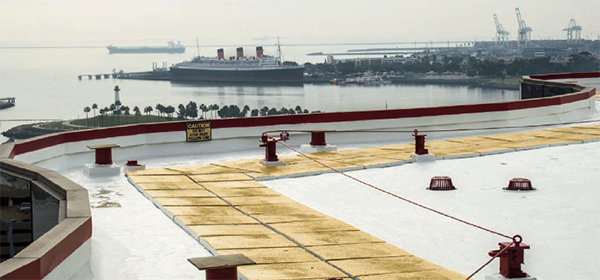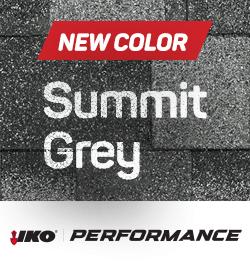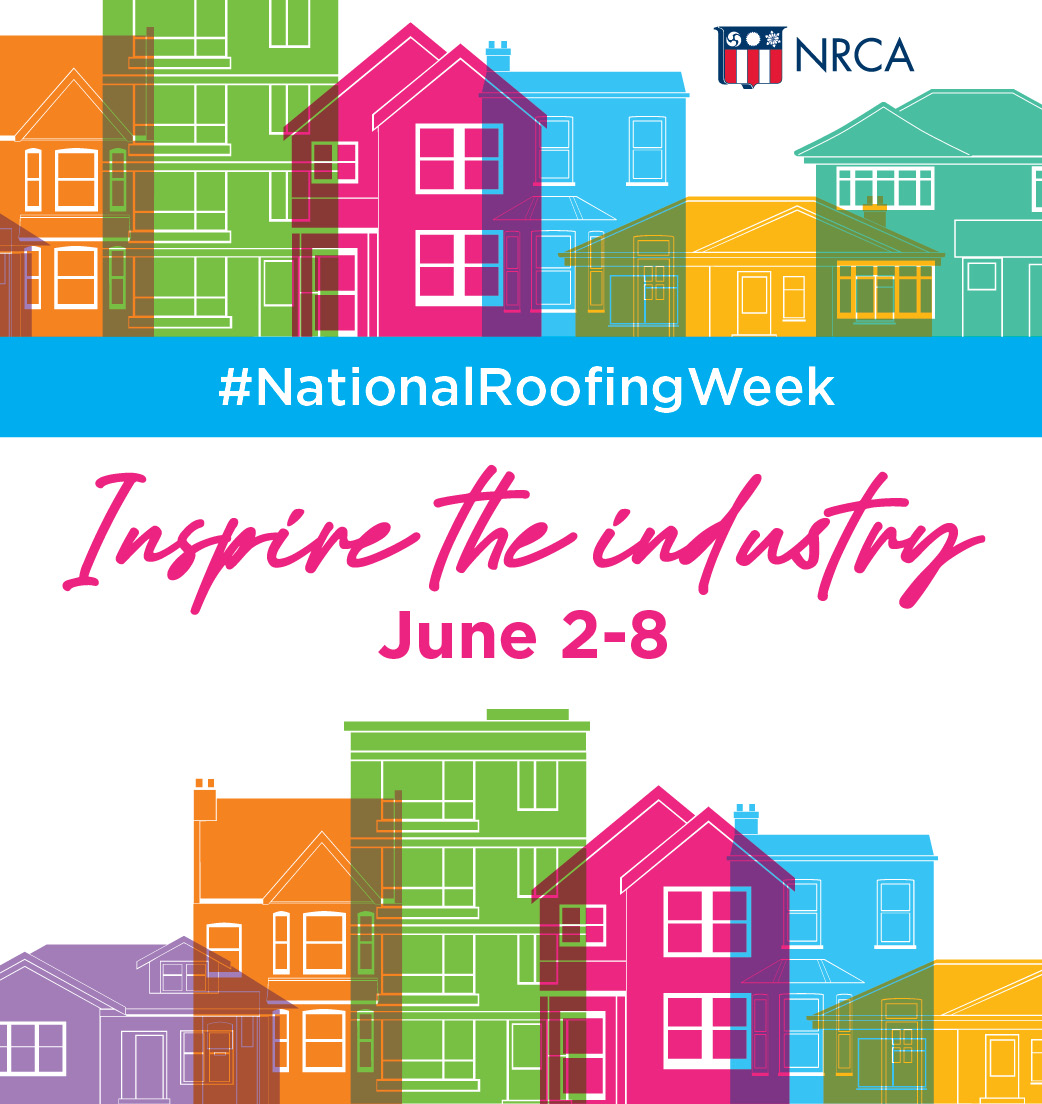Western Colloid Rose to the Challenge on the 200-foot Tall Molina Tower

Five years after the initial installation, the Western Colloid system is standing up to the salty climate and winds.
In 2013, the twin Molina Towers, located in the Long Beach Harbor district in Southern California, needed to do something about its severely aging roof. After much evaluation, a Western Colloid system was specified and installed over the existing roof. Routine, periodic inspection has shown that after five years, the roof is performing better than ever even in the salty climate.
At 200 feet in the air, the installation and material loading presented some challenges that were creatively overcome by Evans Roofing Company of Santa Ana, California.
Here’s the full installation story as detailed in the July 2014 issue of Western Roofing Magazine:
With the Queen Mary anchored majestically in the harbor, the ship serves as a fitting backdrop for the twin Molina Center Towers, located in the Long Beach Harbor district in Southern California. Molina Center is comprised of twin 15-story glass towers, which first opened in 1983. Originally named the Arco Towers and occupied by the huge oil refining company, the landmark twin towers are now owned and occupied by Molina Healthcare.
The buildings contain over 460,000 sq.ft. of office and common space, immaculately designed and maintained to reflect the taste and success of Molina Healthcare. In 2013, chief engineer Craig Aydelott of Abel Engineering, Long Beach, California, contacted a local roof consultant and asked for a roof evaluation. Aydelott has over three decades of experience and knew that the roof membranes on the towers were beyond their expected service life.
After the initial evaluation revealed a well maintained but severely aged roof membrane, the consultant contacted Tony Baratto, president of Evans Roofing Company, Santa Ana, California. Evans Roofing Company is known for its many landmark roofing projects.
While walking the roof with Aydelott and discussing the goals, restraints, and budget for the project, Baratto said that he initially considered a PVC roof membrane for installation over the lightweight, insulating concrete roof deck, after removal of the installed gravel roof system.
Molina Healthcare had the budget to complete the job with whatever materials and methods would produce the best, overall result. “Chief engineer Aydelott and I spoke almost every day for a couple of weeks. I wanted to know everything about the way the roof was used, maintenance habits, and what is expected in the future,” says Baratto. “The more we talked, the more I realized that PVC was not the right choice for the building.”
“One day, I was crunching some numbers for the project when, like a bolt of light, the idea to use a Western Colloid Emulsion and Acrylic roof membrane over the existing membrane occurred to me.” With the considerable help of Western Colloid’s Greg Hlavaty and Sam Dennis, a specification for a 20-year NDL style warranty emulsion roof system was written. “I’ve worked with Greg
Hlavaty on many emulsion and coating projects; he is a guru and always a voice of reason,” stated Baratto. Over the next month Baratto and Aydelott ironed out all of the details of the proposal and it was presented to Ivette Walker of McKinney Advisory Group, Los Angeles, California.
Once the project was under contract, Evans Roofing Company superintendent, Shawn Fleischmann, took control of the job. The first complication came as a result of the Federal Government shutdown. “At the last second, the FAA was unable to process our permit for helicopter loading and unloading of the roof.”
The towers are located in a downtown area; not having a helicopter could have been a huge problem. “Not for us,” notes Fleischmann. “I brought in more labor, installed floor and wall protection from the roof to the underground parking area, set up a trolley system in the underground, and we removed and loaded the towers in two nights.” It was an incredible sight and an unusual accomplishment.
Roofing started on the first tower and within a week the second tower was started. “Our foremen, Ron Hopkins and Hoyt Mull, have been with us a long time. We spoke several times a day and stayed on the same page the entire time. If you ask me, there are three important keys to a great project. First, there must be a manufacturer that understands the truth about its products, limitations, as well as its uses. Second, the production department has to have a direct line to the building management. I always make sure that the managers and occupants of a building know that I am the guy to call for anything related to the project. And, last but not least, the foremen have to share the vision. Roofing is such a particular trade, there is so much that can go wrong. Yet, if the foremen know, really know, how important each step is and why, there will be no issues,” states Fleischmann.
Over 50 tons of gravel were removed from the old roof and the Western Colloid specification was installed over the swept and repaired gravel roof membrane. This is a monster specification but the benefits and expected service life are equally titanic. Overall, on this project, 28 gal. of emulsion, three layers of polyester, and 6 gal. of acrylic coating were used per 100 sq.ft.
Working along the waterfront, close to 200’ above street level, lots of curing time was needed, but the result is stunning. “This is the first high-rise reroof project where we have used this specification. We have installed it many, many times on buildings up to 50’ tall so that we can use Western Colloid’s tankers to supply emulsion to the roof. But, this is the first time for high-rise and five-gallon buckets, about 1,000 buckets per tower,” says Fleischmann. “It won’t be our last. I am really, really pleased with Western Colloid. Start to finish they have been a great partner.”
“I believe the future of roofing can be seen on this project,” states Baratto. “Nothing went to the dump; there were no odor complaints; from the ground you could not even tell we were here. And, in ten years, we are going to come back and touch up the surface coat and Western Colloid is going to extend the warranty for 25 years from that date. That is what I call sustainable and eco-friendly.”
Learn more about Western Colloid solutions at www.westerncolloid.com.








-2.png)









Comments
Leave a Reply
Have an account? Login to leave a comment!
Sign In